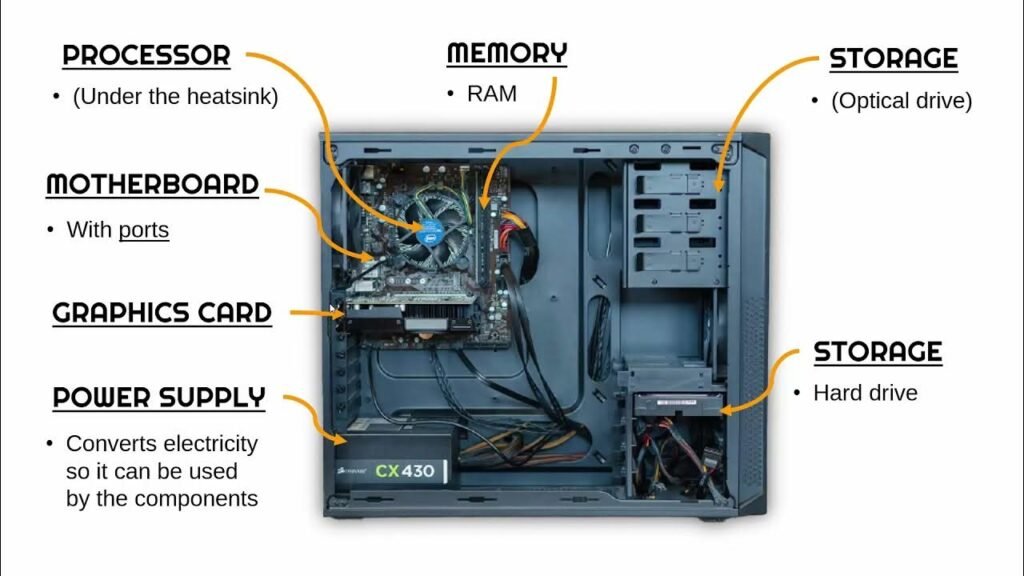Understanding the Computer CPU: The Brain of Your Machine

When people talk about computers, the first thing that often comes to mind is the screen or maybe the keyboard. But the real magic happens inside, and at the heart of every computer is its CPU — the Central Processing Unit. It’s often nicknamed the “brain” of the computer for a good reason. Every task you perform, from opening an app to streaming a video or playing a game, is directed and handled by the CPU.
In this article, we’ll break down what a computer CPU is, how it works, why it matters, and what you should consider when choosing one. We’ll also look at the evolution of CPUs over time and touch on the differences between CPUs in desktops, laptops, and even smartphones. Whether you’re a tech enthusiast, a casual user, or someone just curious about what makes their device tick, this guide has you covered.
What Is a Computer CPU?

The Central Processing Unit (CPU) is essentially the control center of your computer. It executes instructions from programs and handles calculations and decisions necessary for the system’s operations. Without a CPU, your computer would be nothing more than a fancy paperweight — all the hardware components rely on the CPU to function properly.
The CPU interprets and carries out basic instructions that drive the computer’s functionality. These instructions come from applications you run, like web browsers or games, as well as the operating system itself. The CPU processes data, performs calculations, and communicates with other parts of the computer to ensure everything runs smoothly.
Physically, a CPU is a small, flat chip that fits into a specially designed socket on your computer’s motherboard. Despite its tiny size, it packs millions — or even billions — of transistors that enable it to process enormous amounts of data in fractions of a second. Modern CPUs often come with multiple cores, which are essentially individual processing units within the chip, allowing the system to handle multiple tasks simultaneously.
How Does a CPU Work?
The functioning of a CPU is based on a simple but highly efficient process: fetch, decode, and execute. This cycle happens continuously and at incredibly high speeds, often measured in gigahertz (GHz), which indicates billions of cycles per second.
First, the CPU fetches an instruction from the system’s memory (RAM). This instruction is part of a program or operating system directive. Once fetched, the CPU decodes it, which means translating the instruction into signals that can command other parts of the computer, like moving data or performing a calculation. Finally, the CPU executes the instruction, completing the required action. This could be as simple as adding two numbers together or as complex as rendering 3D graphics for a video game.
Most modern CPUs are multi-core, meaning they have several independent cores capable of handling separate instructions at the same time. This parallel processing ability improves efficiency and allows for smoother multitasking. For example, while one core processes your game’s graphics, another can manage background music, and a third can handle network communications — all seamlessly.
Different Types of CPUs
Not all CPUs are created equal. Depending on the type of device and the required performance, CPUs come in various forms. Let’s break down the primary categories:
Desktop CPUs are designed for home or office computers and are typically more powerful and capable of handling complex tasks like gaming, video editing, and multitasking. These CPUs often have higher clock speeds and more cores than their mobile counterparts.
Laptop CPUs prioritize energy efficiency and thermal management. Since laptops have limited cooling capabilities and battery reliance, these CPUs are designed to consume less power while still offering adequate performance. Modern laptop CPUs can be surprisingly powerful, capable of running demanding applications without issue.
Mobile device CPUs, often referred to as SoCs (System on a Chip), integrate not just the CPU but also the GPU, memory controllers, and other essential components onto a single chip. These are found in smartphones, tablets, and other handheld devices, where space and power consumption are critical factors.
Important Factors to Consider When Choosing a CPU
When it comes to picking a CPU, several factors should be considered based on what you intend to do with your computer. Not every user needs the fastest or most powerful processor on the market.
Clock speed is one of the primary indicators of a CPU’s performance, measured in GHz. Higher clock speeds mean the CPU can perform more cycles per second, resulting in faster data processing. However, higher clock speed also typically leads to increased power consumption and heat generation.
Number of cores is another essential consideration. Modern CPUs range from dual-core to 16-core (and higher for specialized setups). More cores allow a CPU to handle multiple processes at once, making a significant difference in tasks like video editing, 3D rendering, and gaming.
Cache memory is a smaller, faster type of memory located directly within the CPU. It temporarily stores frequently accessed data and instructions, reducing the time needed for data retrieval. CPUs with larger cache sizes can offer better performance, particularly in data-intensive applications.
The Evolution of CPUs Over Time
CPUs have come a long way since their inception in the 1970s. The earliest processors, like Intel’s 4004, had a mere 2,300 transistors and operated at just 740 kHz. Compare that to today’s CPUs, which boast over 60 billion transistors and clock speeds exceeding 5 GHz.
Over the decades, CPUs have become exponentially more powerful, efficient, and compact, following Moore’s Law — the observation that the number of transistors in a chip doubles approximately every two years. While Moore’s Law has slowed in recent years, innovation in CPU architecture continues, with new designs focusing on balancing performance with energy efficiency.
One significant leap in recent history has been the shift to multi-core processors. Initially, CPUs had only one core, meaning they could handle one task at a time. The introduction of dual-core, quad-core, and now octa-core (and higher) processors has dramatically improved multitasking capabilities, making modern computing faster and more responsive.
CPU vs. GPU: What’s the Difference?
While the CPU is known as the brain of the computer, the GPU (Graphics Processing Unit) is its artistic counterpart. The GPU is specifically designed to handle rendering images, videos, and animations. It excels in tasks that require processing large amounts of data in parallel — something CPUs aren’t particularly built for.
In gaming and 3D applications, the GPU takes center stage, handling complex graphical computations while the CPU manages the system’s logic and operations. In recent years, GPUs have also found a role in fields like artificial intelligence and cryptocurrency mining, thanks to their impressive parallel processing capabilities.
Although both components are essential, they serve different roles. A well-balanced system ensures that both the CPU and GPU complement each other, delivering a seamless computing experience whether you’re gaming, streaming, or working.
Conclusion: The CPU’s Enduring Importance in Computing
Even as technology continues to evolve, the CPU remains a central component in modern computing. Whether you’re browsing the web, designing graphics, coding software, or just enjoying a movie, your CPU is hard at work behind the scenes. Its ability to process data, execute commands, and communicate with other components makes it indispensable.
Understanding how a CPU works, its different types, and what to look for when choosing one can help you make smarter, more informed decisions about your technology purchases. As CPU technology continues to advance, we can expect even more powerful, energy-efficient, and intelligent processors in the future — shaping the way we interact with technology in both obvious and unseen ways.



